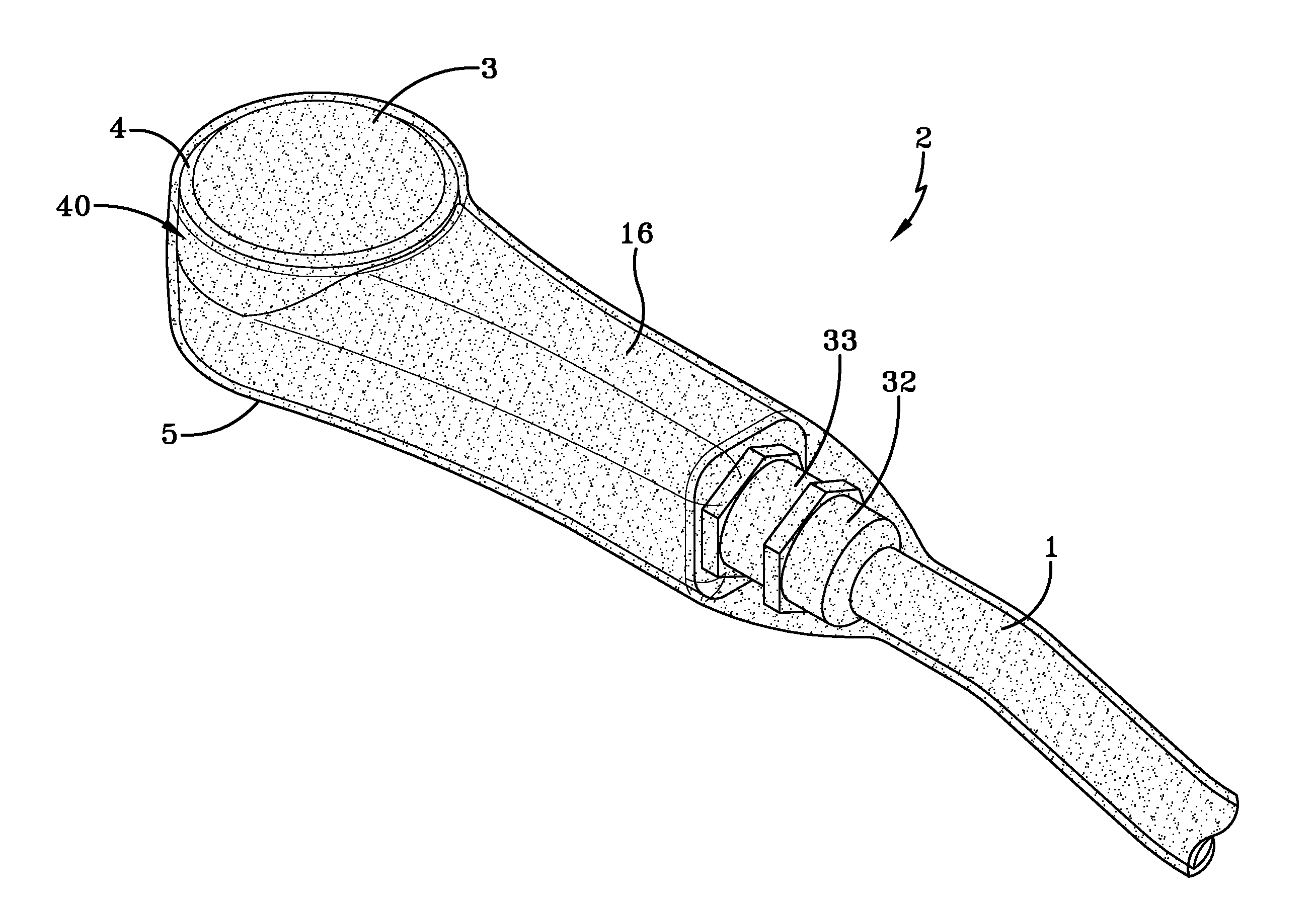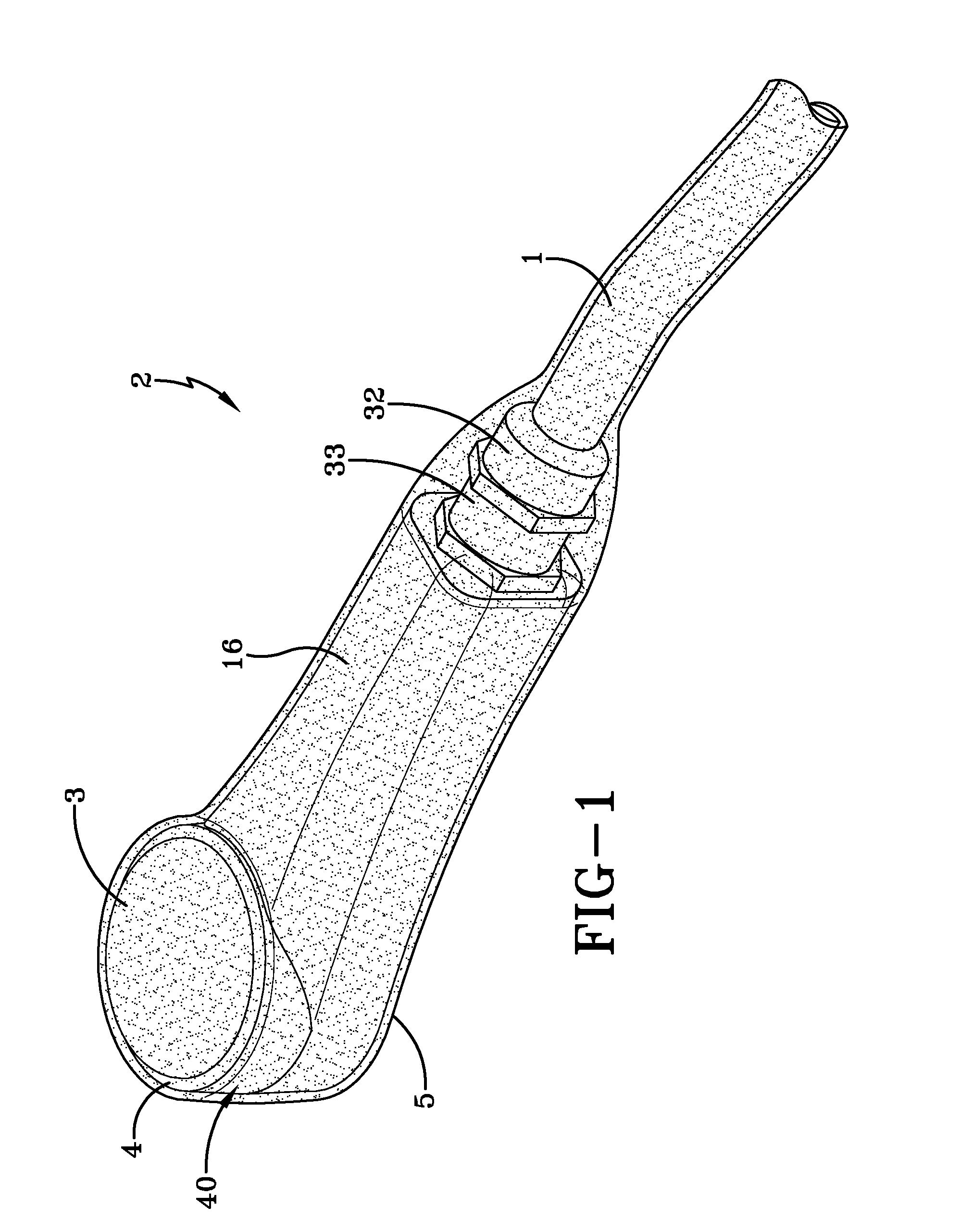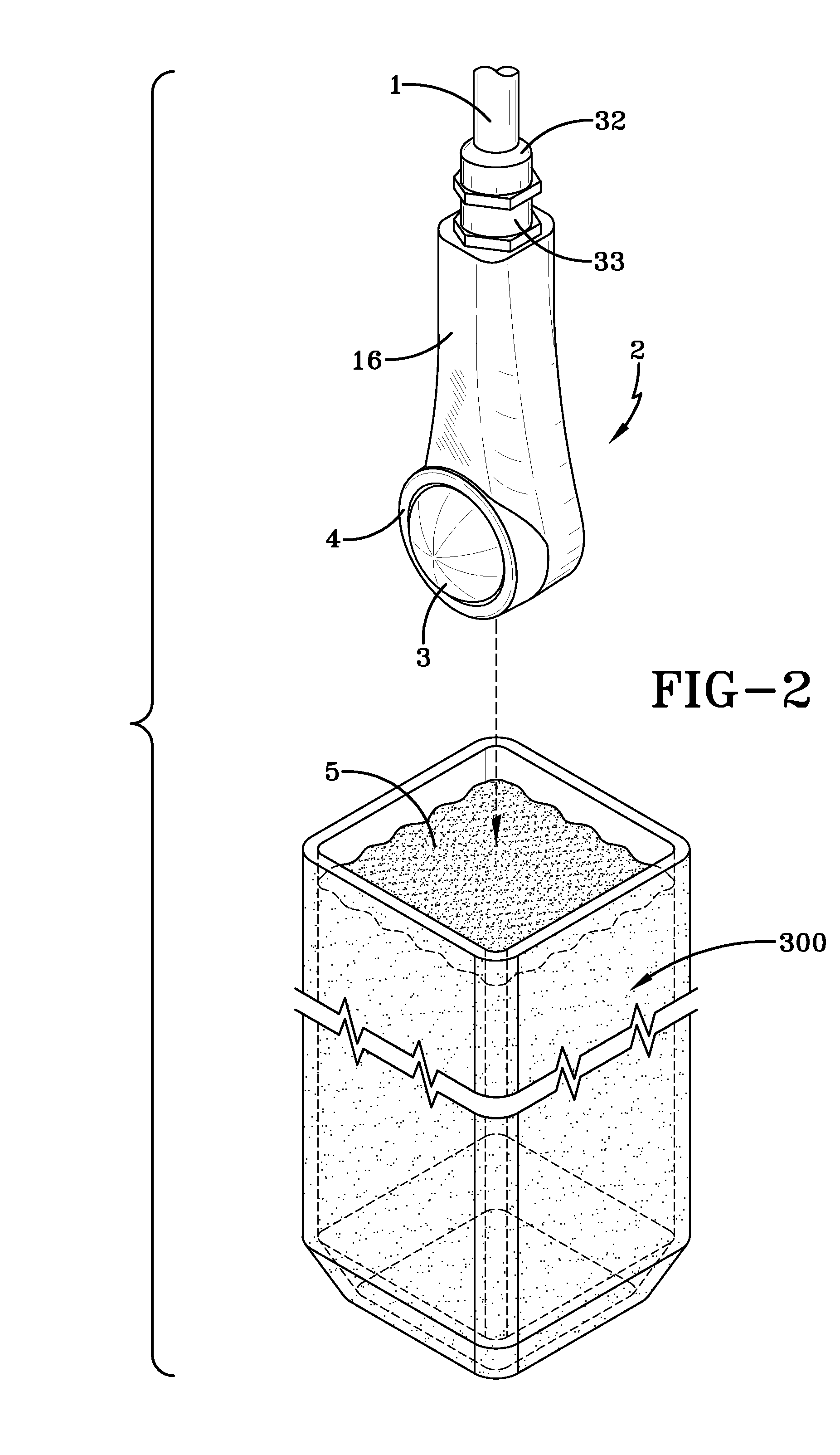Shock Wave Treatment Device
a treatment device and shock wave technology, applied in the field of shock wave treatment devices, can solve the problems of complex delivery of shock wave to internal organs, difficulty in treating such organs as the heart, cavitation effects, etc., and achieve the effects of dissipating any transmitted acoustic energy, low cost, and effective design
- Summary
- Abstract
- Description
- Claims
- Application Information
AI Technical Summary
Benefits of technology
Problems solved by technology
Method used
Image
Examples
Embodiment Construction
[0057]With reference to FIG. 1 a small portable hand-held shock wave applicator device 2 is illustrated. The shock wave applicator 2 has a cable 1 extending from an end of an applicator housing 16. The cable 1 is connected to a shock wave generator (schematically illustrated in FIG. 12) and as illustrated in FIG. 1 fastened to the applicator housing 16 via a pair of threaded connectors 32, 33.
[0058]At the opposite end of the applicator 2 is an applicator head portion 40 as shown the applicator head portion 40 has a rounded contour with a diameter of approximately 5 cm, preferably smaller which enables the device to be easily positioned around or under the organ to be treated. It is in this portion 40 that the shock wave patterns are produced, reflected and emitted to the organ or tissue 100 being treated. The head portion 40 includes a reflector cover 3 which is sealed and retained by the annular fixation ring 4 which secures and holds the reflector cover 3. The reflector cover 3 is...
PUM
 Login to View More
Login to View More Abstract
Description
Claims
Application Information
 Login to View More
Login to View More - R&D
- Intellectual Property
- Life Sciences
- Materials
- Tech Scout
- Unparalleled Data Quality
- Higher Quality Content
- 60% Fewer Hallucinations
Browse by: Latest US Patents, China's latest patents, Technical Efficacy Thesaurus, Application Domain, Technology Topic, Popular Technical Reports.
© 2025 PatSnap. All rights reserved.Legal|Privacy policy|Modern Slavery Act Transparency Statement|Sitemap|About US| Contact US: help@patsnap.com



